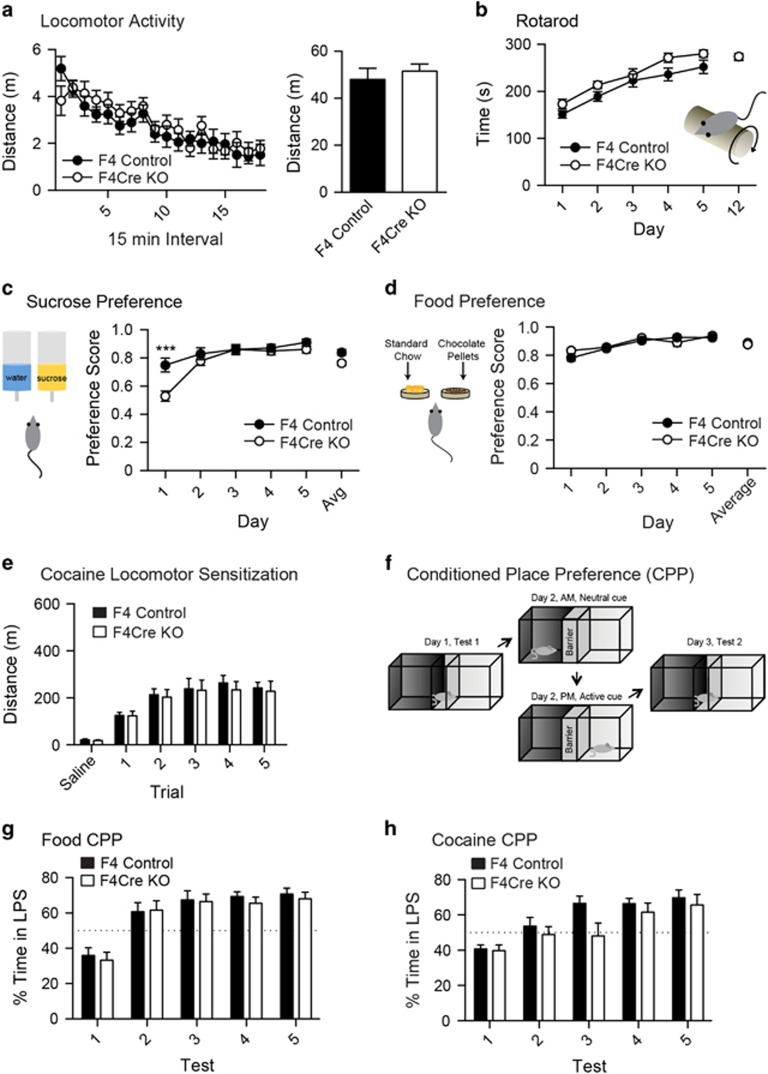Figure 2.
General behavioral characterization of F4Cre mice. (a) No differences were seen in open-field activity (F4 n=12, F4Cre n=12). (b) An accelerating rotarod test revealed no differences between groups (F4 n=17, F4Cre n=17). (c) In a 5-day sucrose preference test, the F4Cre mice displayed reduced preference for sucrose solution on the first day than the F4 animals (***P<0.001), although no other group differences were seen (F4 n=8, F4Cre n=8). (d) No differences were seen in preferences for chocolate food pellets (F4 n=11, F4Cre n=12). (e) Animals from both strains showed a similar significant increase in activity in response to 20 mg kg−1 cocaine (F4 n=12, F4Cre n=12). (f–h) Experimental set-up of conditioned place preference (CPP) experiments (f). No differences were seen in CPPs induced by food (F4 n=8, F4Cre n=7) (g) or 20 mg kg−1 cocaine (F4 n=8, F4Cre n=8) (h). Least preferred side (LPS). (***P<0.001 and P⩾0.05, no significance). All data were presented as mean±s.e.m. FR, fixed ratio; KO, knockout.

